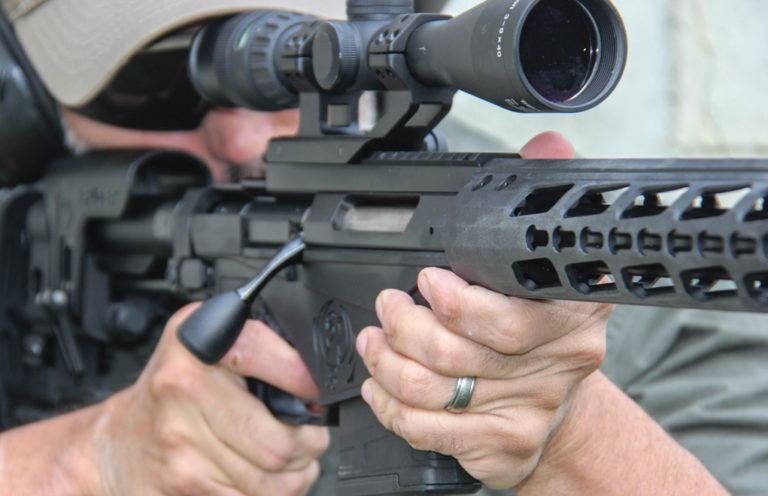

Ruger has come out with its fair share of classic guns. Find out which ones top our list.
What Are The Great Ruger Guns:
One of the most prolific firearms manufacturers in America is also—relatively speaking—one of its newest. This isn’t to say Strum, Ruger & Co. is a spring chicken. Far from it. The company has been turning out handguns, rifles and shotguns since the late 1940s. But compared to the Winchesters, Remingtons and Colts of the world, the New Hampshire/Arizona gunmaker is in its adolescence. And what a talented youth it’s turned out to be.
In just over a half-century, Ruger has grown to become one of the world’s largest and most popular firearm’s manufacturers. The formula to its success is simple, give shooters what they want. Certainly, this has led many to complain the company lacks in originality. A fair criticism, given many of its guns are modernized renditions of existing designs. Yet, Ruger has always found a way to add value, make them more functional to contemporary shooters and unique in their own way. Doing so, they’ve created some all-time classics, affordable ones to boot.
What are some of the Ruger greats? A difficult question to answer, given the sheer volume of its catalog, but one we try to boil down here. So, let’s take a look at the 10 top Ruger guns you definitely need to add to your safe.
Ruger Standard Model
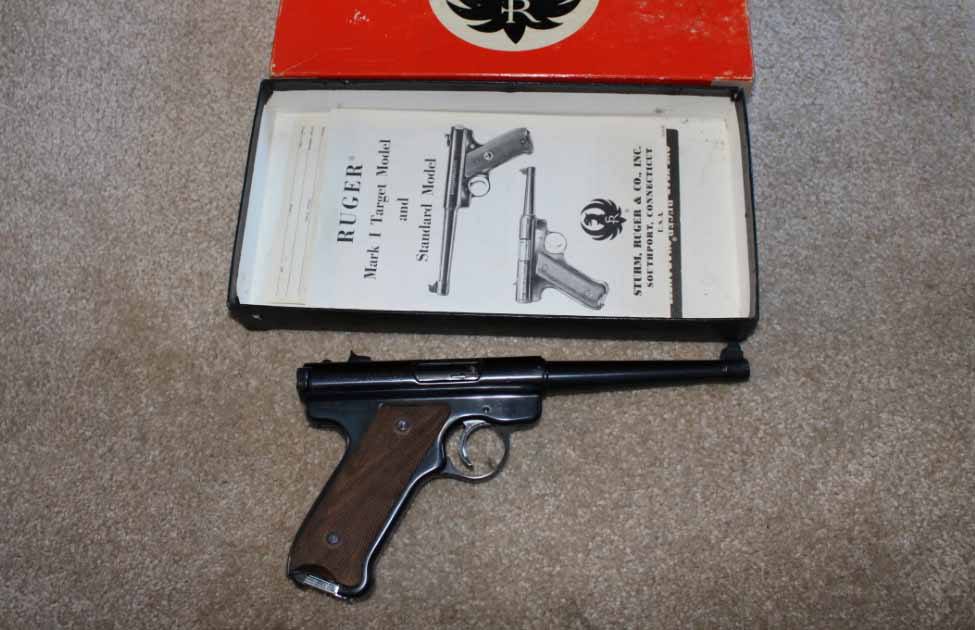
It’s difficult to understate the importnce of the Standard to Ruger. If Helen of Troy had the face to launch a thousand ships, the rimfire had the performance to launch a million guns. The first firearm Bill Ruger designed and brought to market (in 1949), the pistol was the seed that grew into Strum & Ruger we know it today. Impressive, given it was cobbled together in Ruger’s garage.
Based on the Nambu pistol, the Standard is embarrassingly accurate and an absolute joy to shoot. Much of this is due to the simple-blowback pistol’s fixed barrel design, making it as stable as if it was set in concrete footings. This attribute has led many to call the Standard and its successors—the Mark line—the greatest rimfire pistols ever conceived.
About the only knock on the Standard was its disassembly/reassembly process, a procedure that left many tearing their hair at the roots. Mercifully, Ruger (the company) addressed this in the Mark IV pistol. Introducing a push-button takedown design, the pistol is a breeze to get apart.
Ruger 10/22

If you picked up shooting in the last 50 years or so, the odds are good this was the gun you cut your teeth on. Since 1964, the 10/22 has become one of the all-time best-selling .22 rifles to hit the market. Its selling points—accuracy, simplicity and, above all, fun.
The semi-automatic with its unique rotary magazine drills bullseyes as quickly as you pull the trigger, a feature endearing it to nearly anyone who’s picked one up. But its straightforwardness is what makes the affordable plinker/hunter/target gun a practical choice. The gun is grade-school math easy to get apart, outfitted with a trigger group that drops out and barrel that screws in. Armed with a screwdriver and a punch, it’s more than feasible to keep a 10/22 running for generations. Many have.
Nowadays, its modularity has continued to drive interest, but for different reasons. Aftermarket upgrades for the 10/22 are legion and varied, making the rifle only second to the AR-15 for customizability. Tactical plinker, heavy-barreled precision rig, sporter-profile hunter—the bits and pieces are there to tailor the rimfire to these and hundreds of other applications.
Learn More: Barrels for the Ruger 10/22
Ruger Single-Six

At a time the country was cowboying up, Ruger gave it exactly what it wanted. Inspired by movie and T.V. cowboy shows of the early 1950s, Americans flocked to the .22 LR Single-Action Army revolver to live out their Wild-West Dreams. Yet, the Single-Six wasn’t all hat and no cattle. It performed too.
While it doesn’t get mentioned as often as the great semi-automatic rimfire pistols, the revolver is equal to them in the accuracy department. Also in the pure pleasure of shooting one.
Knocking out the bullseye wasn’t the only factor in the Single-Six’s success. Its timing was as well. Ruger geared up production of Single-Six in 1953, about the time Colt shut down its SAA line. Talk about serendipity. For a while there, Ruger was the only show in town if you wanted to own a brand-new rendition of the all-time classic.
Like other Ruger revolvers, the Single-Six also led the way in safety, though not right off the bat. In 1973, the company introduced the transfer bar safety, which prevented the gun from firing until the trigger was pulled. The New Model Single-Six could be carried safely with all chambers loaded, not the case with old SAA revolvers.
See More: The Ruger Single-Six
Ruger Blackhawk

If a single-action rimfire revolver infatuated the gun-buying public, what would a centerfire version do? Plenty, as Ruger found out in 1955. Working off the same cultural momentum that drove Single-Six’s success, the Blackhawk quickly rose in popularity. Though, Western flicks and Colt exiting its SAA market weren’t the sole factors in its accent.
Ruger also modernized the iconic revolver's design, catering to modern shooters’ tastes in caliber. Originally, the Blackhawk was released in what was then the hot revolver cartridge—.357 Magnum. Inherently accurate, the magnum was also widely available and highly versatile, given its parent cartridge—the .38 Special—also functioned in guns chambered for it. Following soon after, Ruger released the Blackhawk in the then-new .44 Magnum, giving shooters an even more powerful option. Presently, the revolver is available in eight chamberings, including some semi-auto cartridges.
The Blackhawk also ushered in an era of safer SAA revolvers with the introduction of the transfer bar safety in 1973. The mechanism on the New Model Blackhawk prevented the gun from firing unless the trigger was pulled. In turn, for the first time, it was safe to carry a six-shooter with all its chambers loaded.
More On: The Ruger Blackhawk Revolver
Ruger Redhawk

If you’re going to shoot big-bore revolvers you might as well go the whole hog. Warm-up those beasts and pitch them red hot. Starting in 1979, Ruger gave shooter this avenue with the Redhawk, a beefy brute with material enough to handle the most souped-up loads.
This made the double-action a near-instant success among handloaders, given their natural inclination to push the boundaries. As well as handgun hunters, a discipline picking up steam just about this time.
Ruger didn’t stop with an ample stainless-steel frame on the Redhawk. The circumference of its cylinder is much greater than what you might find on a comparable large-framed revolver, also longer. This gives the Redhawk the ability to digest higher seated (read more powder) loads that won’t fit other revolvers.
Ruger had to tweak the gun's design to accommodate its ogrish dimensions. Most notable, it offset the ejection rod allowing for more frame material to stiffen the revolvers resolve. While it’s a bit overkill when chambered .357 Magnum, it’s right on the money shooting .41 Mag., .44 Mag. and sizzling .45 Colt loads.
Ruger Super Redhawk
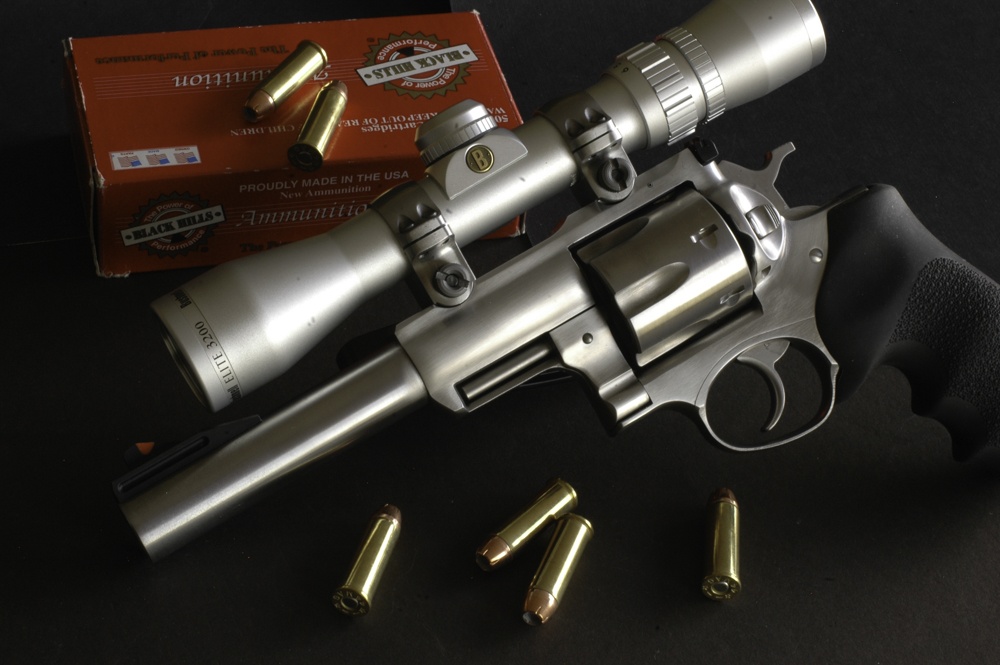
There’s nothing small about the Super Redhawk. It has the stuff that makes its namesake—the Redhawk—appear pipsqueakish in comparison. Not an easy task, given the XL proportions of the original.
Yet, the Super Redhawks extraordinary size was just the ticket in 1987, when handgun hunting began hitting its stride and there was a call for a revolver to handle the hottest of the hot loads. One gander, there’s little mistaking how the 6-round revolver accomplishes this—steel and plenty of it. Its trademark—except on the 2.5-inch barreled Alaskan—an extended frame barrel collar, in which the barrel is screwed. In addition to creating a system fit for any hand-cannon caliber, it also bestows the admirable attribute of giving it plenty of mounting surface for a scope.
Exotic as it might look, the Super Redhawk is very familiar to those who know Ruger revolvers. Internally, it’s essentially a GP100. Shared commonality with Ruger’s main double-action revolver line, makes the Super Redhawk easier to customize and maintain. More so than many other revolvers in its class.
Check Out: Redhawk vs. Super Redhawk
Ruger Mini-14

Truck gun … perhaps no other firearm better defines this category. Borrowing heavily from M14 in design, the gun is rugged and reliable and made for real-world use. Just the thing to hang on your rack when you’re fencing the back 40.
Much of this is due to the rifle’s long-stroke piston operation, which is resilient enough to make the mind boggle. You can abuse a Mini-14, within reason, and still expect it to chew through a magazine. Drill the bullseye, that’s a different discussion.
Historically, the gun was accurate enough for most practical purposes, but its old pencil barrel had some whip to it when it heated up. Thus long strings saw groups widen. Ruger retooled in the early 2000s and slightly redesigned the rifle, beefing up the barrel profile and helping it maintain its accuracy during high-volume shooting sessions.
The Mini-14 has come a ways since its release in 1973. Like most things Ruger, the company has expanded configuration choices as well as chambering. In addition to .223 Rem./5.56 NATO, it’s also available in .300 Blackout. Though, the rifle no longer meets the definition of “poor man’s AR”—if it ever really did. Presently, the Mini-14 is priced above a great swath of entry-level ARs. This makes it a hard call when you side-by-side the carbines. Though, most who put a Mini-14 in their safe rarely lament the addition to their collection.
Ruger Model 77

Bill Ruger had an uncanny ability to know when to get into the game and what to get in with. In addition to the Single-Six and Blackhawk, the M77 is an excellent example of this attribute. In an era when gunmakers were jettisoning the over-sized Mauser claw extractor on their bolt-action rifles, Ruger fully embraced it. And oh, how the shooters came flocking in 1968 when it was released on M77.
The knock on the Mauser-style action, at least according to other gun companies, was it cost too much to produce. Their take, they’d price themselves out of the market if they didn’t embrace a push-feed system with both arms. Ruger believed otherwise. Tapping Jim Sullivan (of AR fame), Ruger came out with a rifle utilizing the popular action and, low and behold, it didn’t run an arm and a leg. Investment casting was one part of the equation in making the M77 affordable, but there were other tweaks.
Though it looked the part, the rifle wasn’t a clone of the tried-and-true Mauser 98—especially internally. Perhaps the most ground-shaking innovation was angling the guard screw forward. Elegantly simple, this streamlined the inletting process (the gun originally boasted a nice stick of walnut), while still bedding the action firmly in the stock.
The Hawkeye, continues the M77’s tradition, though in more specialty configurations, making it for more than hunting season. And it's been upgraded in a number of ways, but one thing remains the same—the big, beautiful extractor claw.
Ruger Precision Rifle
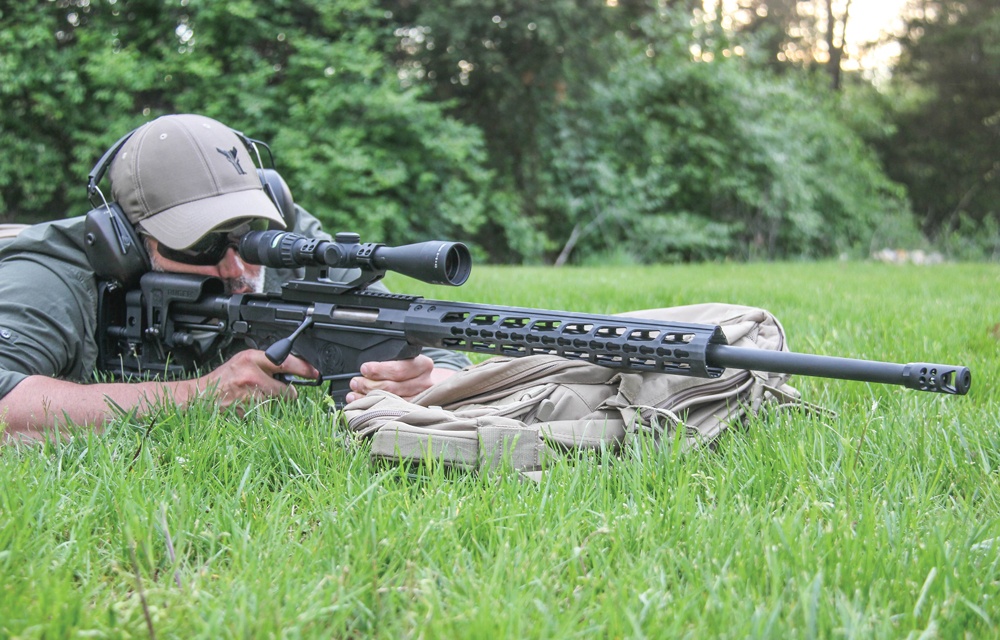
Long-range shooting is as hot as a grease fire presently. At the epicenter is Ruger’s chassis rig—the Ruger Precision Rifle. Essentially, the rifle opened the door to extreme-range shooting to everyday marksmen. And it did so the Ruger way—economy.
Up to its release in 2015, dedicated precision rifles had a steep barrier of entry. Generally not an off-the-shelf affair, shooters had to dedicate a good chunk of time and money putting one together. Or spend even more for a complete rifle made by niche manufacturers.
Despite its more affordable price, you don’t compromise with the Ruger Precision Rifle. The rifle does what it promises, delivering sub-MOA accuracy. Much of this is due to a well thought out chassis that provides the oh-so-necessary rigidity shooters require for precision work. But Ruger didn’t skimp anywhere on the rifle, outfitting it with a fully adjustable buttstock, cold-hammer-forged barrel with 5R rifling, multiple magazine interface, 20 MOA Picatinny optics rail with increased elevation capabilities and Ruger’s Marksman adjustable trigger.
The gunmaker offers the rifle in several calibers favored by precision shooters, including 6.5 Creedmoor, .308 Win., .300 Win. Mag., .300 PRC and .338 Lapua Mag. Ruger has even extended the line to rimfire cartridges with the Ruger Precision Rimfire. While affordable precision rifles have become more common over the years, Ruger’s rig remains a standard-bearer for this style of rifle.
Find Out More: Ruger’s Precision Rifle In 6mm Creedmoor
Ruger No. 1
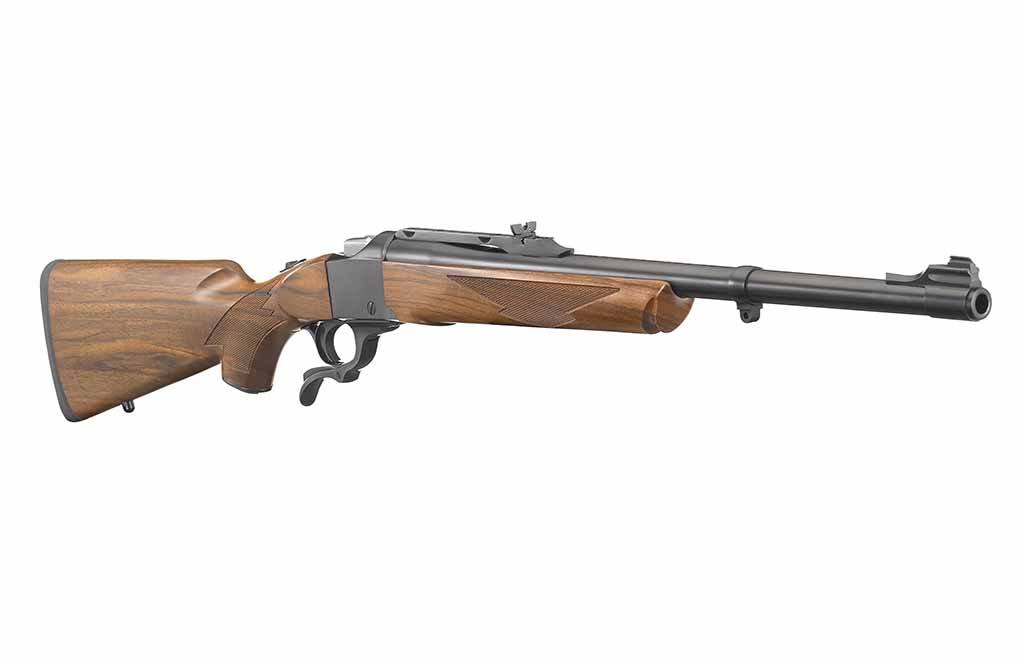
Technologically akin to the buggy whip, yet as enduring as the metallic cartridge—this fairly well sums up the Ruger No. 1. Among the most elegant production rifles of the past 50 years or so, the dusty design has come to define high-class hunting at a workingman's price.
Based on the English Farquharson falling-block rifle, circa 1872, Bill Ruger unleashed the rifle on the sporting world during the bolt-action’s hay day. Quite a break, given it's a single shot. Yet, it wasn’t only distinguished looks that attracted hunters to the No. 1.
Tough as rolled steel, the rifle built a reputation for ruggedness and dependability. The fact it had an abbreviated receiver didn’t hurt either. With no need to make space for a magazine, Ruger was free to install longer barrels on the No. 1, thus milk a bit more velocity out of most cartridges. The only fly in the ointment, some have reported certain runs of the rifle have less-than-desirable accuracy. Though, this seems an issue generally found in older No. 1s.
Chambered for every conceivable cartridge under the sun, the single-shot has taken game of every variety—from lowly prairie dogs to towering pachyderms. Chances are, for discerning hunters, the No. 1 will continue putting trophies on the wall and meat on the table for years to come.
Learn More: The Sweet Ruger No. 1

Next Step: Get your FREE Printable Target Pack
Enhance your shooting precision with our 62 MOA Targets, perfect for rifles and handguns. Crafted in collaboration with Storm Tactical for accuracy and versatility.
Subscribe to the Gun Digest email newsletter and get your downloadable target pack sent straight to your inbox. Stay updated with the latest firearms info in the industry.

![Best Concealed Carry Guns In 2025 [Field Tested] Wilson Combat EDC X9S 1](https://gundigest.com/wp-content/uploads/Wilson-Combat-EDC-X9S-1-324x160.jpg)


![Best 9mm Carbine: Affordable PCCs [Tested] Ruger Carbine Shooting](https://gundigest.com/wp-content/uploads/Ruger-Carbine-Shooting-100x70.jpg)
![Best AR-15: Top Options Available Today [Field Tested] Harrington and Richardson PSA XM177E2 feature](https://gundigest.com/wp-content/uploads/Harrington-and-Richardson-PSA-XM177E2-feature-100x70.jpg)
